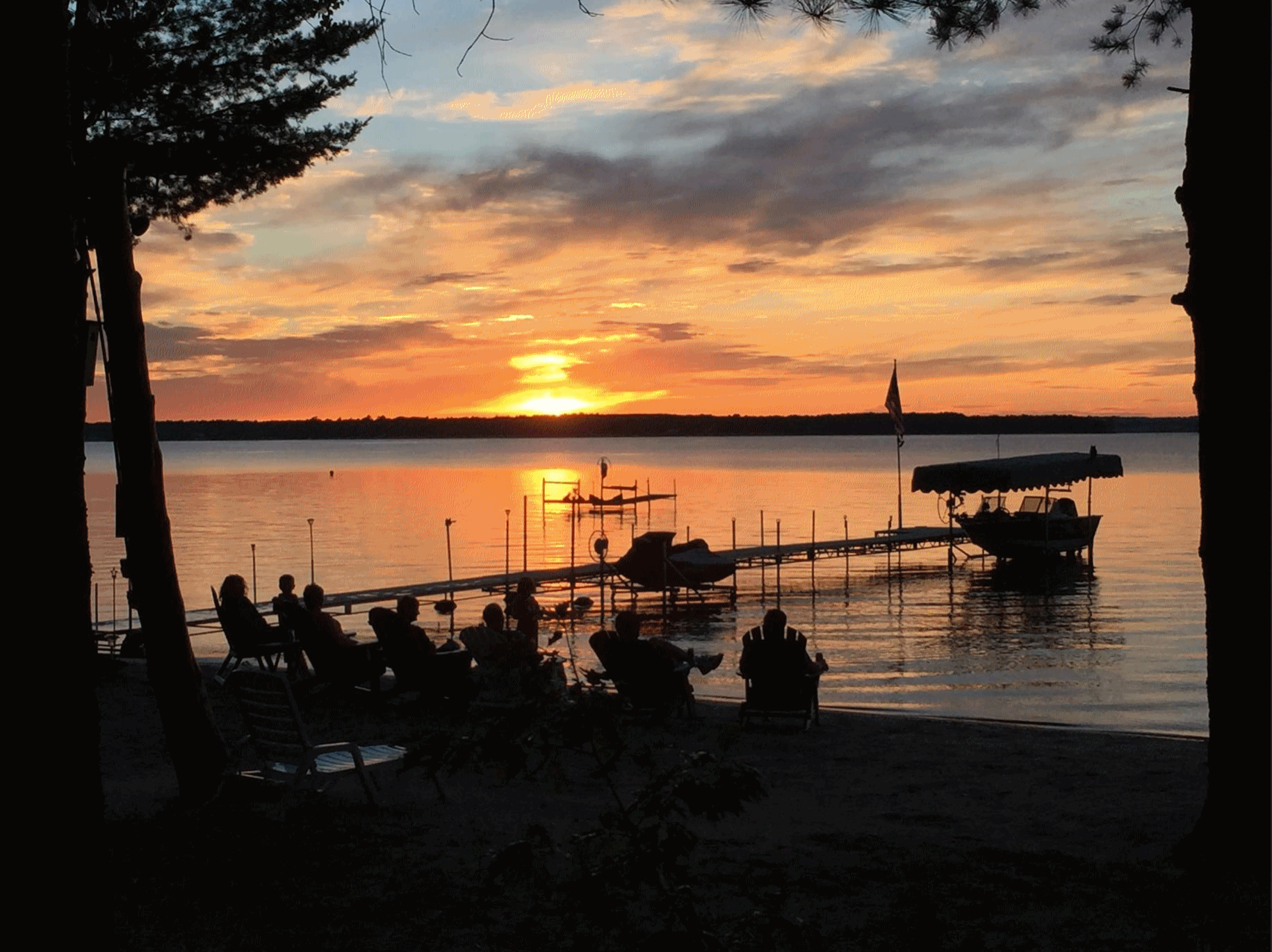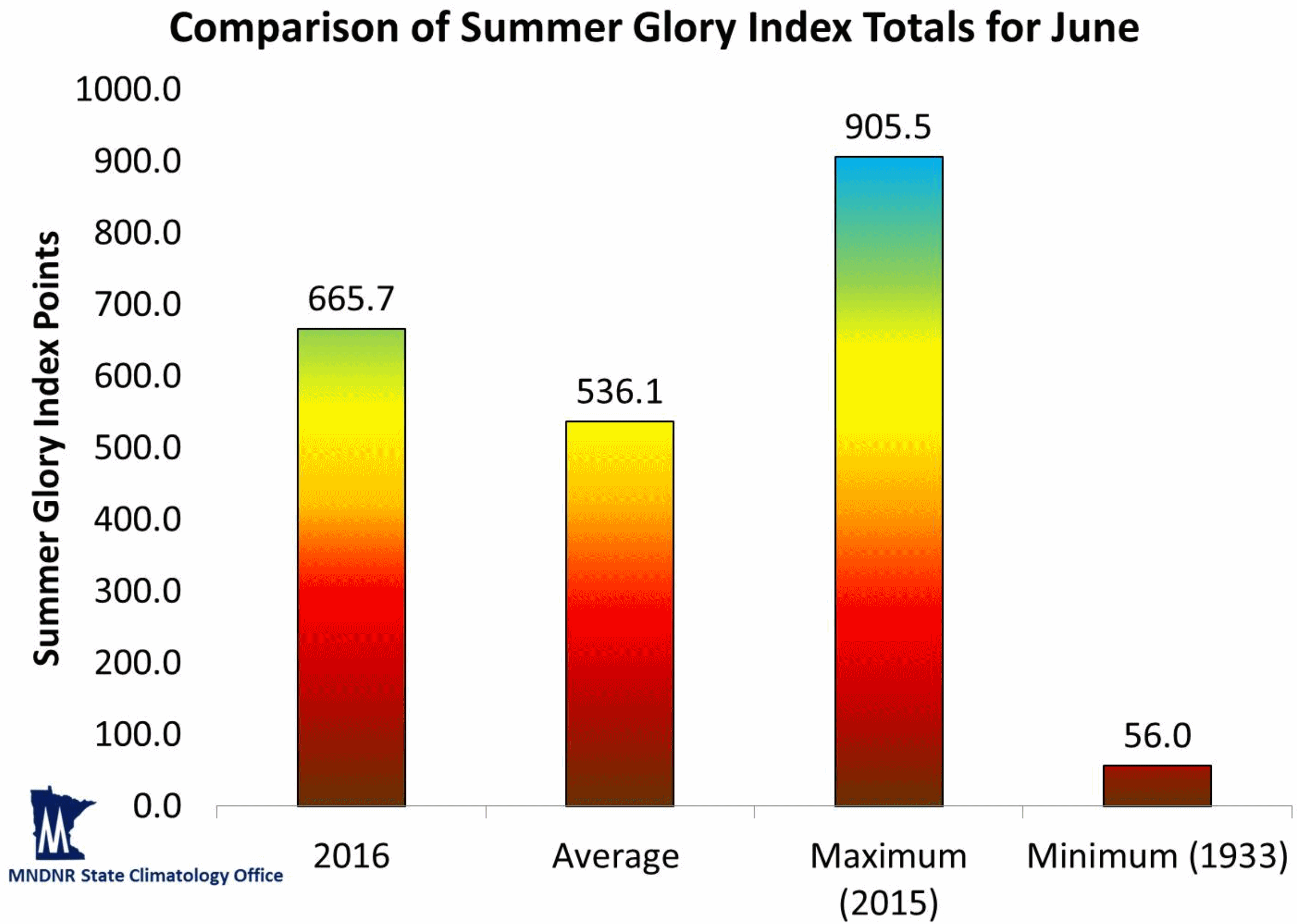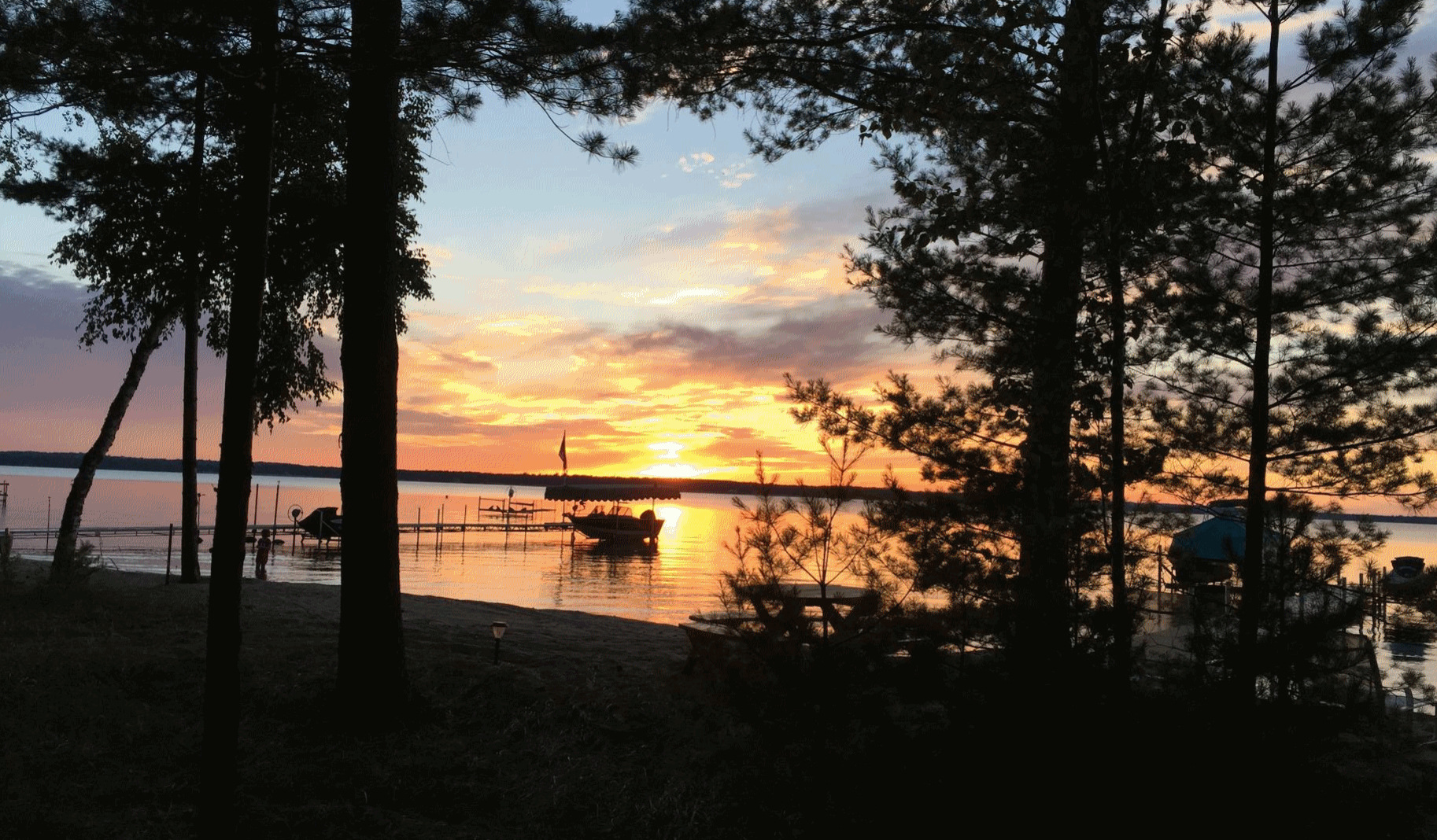75 F. high in the Twin Cities Friday.
83 F. average high on July 1.
73 F. high on July 1, 2015.
July 2, 1989: Softball sized hail falls near Dorset, and baseball sized hail is reported at Nevis in Hubbard County.
July 2, 1972: A low of 32 is recorded at Big Falls in Koochiching County.
 Divine Intervention? Spectacular Holiday Weather
Divine Intervention? Spectacular Holiday WeatherNOAA's
climate models are predicting a warmer than average July for Minnesota.
That makes sense, considering May was the 13th consecutive month a
monthly global temperature record was broken; the longest such streak
since global temperatures began in 1880.
Research at the
University of Minnesota suggests we're going longer between storms and
frontal passages during the summer, but when it does rain in comes down
in a tropical torrent, with a greater potential for record rainfall
amounts.
This sluggish, slower-moving pattern works to our
advantage this holiday weekend. A fresh shot of low-humidity Canadian
air lingers into
Sunday with light southeast winds, dew points in the 50s and generous sunshine. We should nudge 80F today, low 80s
Sunday, mid-80s on the
4th of July as humidity levels rise.
Most towns and lakes stay dry into
Monday; just a few random T-storms over the Red River Valley. Most of us won't be chased indoors by grumbling storms until
Tuesday night. We may hit 90F by midweek but no extended heatwave is in sight.
I'm feeling lucky/relieved/blessed. Have fun out there!
Heaviest Rains Pass South of Minnesota.
Here's a local WRF model showing predicted accumulated rainfall as of 1
pm today; over 3-4" for parts of eastern Kansas and western Missouri in
the span of 18 hours. Graphic: HopWRF.
Heating Up Next Week.
Soak up comfortable temperatures and humidity levels over the weekend
because NOAA and ECMWF models show things warming up close to 90F by the
middle of the week. NOAA guidance keeps 90s into Friday. We'll see.
ECMWF guidance above: WeatherBell.
What Are The Statistical Probabilities of Rain on the 4th of July? Across much of Minnesota it's 22-25% or roughly 1 in 4 are wet. Here's an explainer from
NOAA: "
NOAA’s National Weather Service is already issuing real forecasts for Independence Day (find your local forecast),
but here’s a historical look at the probability that your Fourth of
July picnic will be rained on, based on observations from 1981-2010.
Double click on the map (or use controls at upper left) to zoom in.
SIngle click on a dot to see the chances for rain based on a location's
climate history. More explanation and static maps for download are
available in this week's Beyond the Data blog post.
Interactive by NOAA Climate.gov, based on U.S. Climate Normals data
from Deke Arndt, National Centers for Environmental Informaiton."
 Glory Index: Nice June, But Not as Remarkable as June 2015
Glory Index: Nice June, But Not as Remarkable as June 2015. Thanks to Kenny Blumenfeld at the
Minnesota DNR for passing this nugget along: "
The results are in, and June 2016, though occasionally quite lovely, was no June 2015. The month ended with 665.7 points on the Summer Glory Index (SGI),
making it the 24th nicest June out of 114 on record. This otherwise
respectable score is of course nowhere near the record-topping 905.5
points earned by June 2015. So, what was the difference between June
2015 and June 2016? Basically, it all comes down to a handful of
less-than-ideal days that last June avoided but that this June fully
embraced..."
Graphic credit: MNDNR, State Climatology Office.
Another Warmer Than Average Month in June. So reports Mark Seeley, in this week's installment of
Minnesota WeatherTalk: "
For
most of Minnesota June was warm, with an average monthly temperature
that ranged from 1 to 3°F greater than normal. A few areas of northern
Minnesota reported slightly cooler than normal mean June temperature
values. Extreme temperatures ranged from 100 degrees F at Madison (Lac
Qui Parle County) on the 12th to just 28 degrees F at Embarrass (St
Louis County) on the 8th. A few days with dew points in the 70s F pushed
the Heat Index above 100 degrees F at several locations and caused the
National Weather Service to issue several Heat Advisories..."
2016 Will Be a Record-Breaker, And Not In a Cool Way. Here's an excerpt of a summary at
GOOD: "...
This May was the hottest on record since recordkeeping began 137 years ago, according to a newly released report by the National Oceanic and Atmospheric Administration
(NOAA). But that’s not all. The report also notes, “May 2016 marks the
13th consecutive month a monthly global temperature record has been
broken—the longest such streak since global temperature records began in
1880.” Overall, this puts 2016 on pace to be the hottest year ever..."
Claim That Jet Stream Crossing Equator is "Climate Emergency" is Utter Nonsense. Jason Samenow has the scientific take-down at
Capital Weather Gang: "
Two
bloggers have made a stunning claim that has spread like wildfire
on the Internet: They say the Northern Hemisphere jet stream, the
high-altitude river of winds that separates cold air from warm air, has
done something new and outrageous. They say it has crossed the equator,
joining the jet stream in the Southern Hemisphere. One said this
signifies that the jet stream is ‘wrecked‘, the other said it means we have a “global climate emergency.”
But these shrill claims have no validity — air flow between the
hemispheres occurs routinely. The claims are unsupported and
unscientific, and they demonstrate the danger of wild assertions made by
non-experts reaching and misleading the masses..."
Image credit: "
High-altitude winds as analyzed by GFS model on June 30." (earth.nullschool.net, adapted by CWG)
Greenbrier Resort Opens Doors to West Virginia Flood Victims. Here's an excerpt of a story at
Golf Digest: "
The
Greenbrier Resort was suppose to host the world's best golfers next
week. Instead, the White Sulphur Springs estate is serving as home to
victims of the deadly West Virginia floods. Though the resort is
officially closed, the hotel has opened a limited number of rooms to
those who have lost their homes. "Due to all of the damage we received
from the storm, we aren't able to provide The Greenbrier experience that
our guests expect," said Jim Justice, owner of the resort. "But we can
certainly provide a comfortable room for those who are hurting and need a
place to go..."
The Antarctic Ozone Hole Has Finally Started to "Heal", Scientists Report. Chris Mooney has details at
The Washington Post; here's the intro: "
In a major new paper in
the influential journal Science, a team of researchers report
strikingly good news about a thirty year old environmental problem. The
Antarctic ozone “hole” — which, when it was first identified in the
mid-1980s, focused public attention like few other pieces of
environmental news — has begun, in their words, to finally “heal.” “If
you use the medical analogy, first the patient was getting worse and
worse, and then the patient is stabilized, and now, the really
encouraging thing, is that the patient is really starting to get
better,” said MIT atmospheric scientist Susan Solomon, lead author of
the study, and former co-chair of the United Nations’ Intergovernmental
Panel on Climate Change..."
Image credit: "
This false-color image shows ozone concentrations above Antarctica on Oct. 2, 2015." (Credits: NASA/Goddard Space Flight Center)
 Hubble Captures Vivid Auroras in Jupiter's Atmosphere
Hubble Captures Vivid Auroras in Jupiter's Atmosphere.
NASA has the amazing details: "
Jupiter,
the largest planet in the solar system, is best known for its colorful
storms, the most famous being the Great Red Spot. Now astronomers have
focused on another beautiful feature of the planet, using Hubble's
ultraviolet capabilities. The extraordinary vivid glows shown in the new
observations are known as auroras. They are created when high-energy
particles enter a planet’s atmosphere near its magnetic poles and
collide with atoms of gas. As well as producing beautiful images, this
program aims to determine how various components of Jupiter’s auroras
respond to different conditions in the solar wind, a stream of charged
particles ejected from the sun..."
Image credit: "
Astronomers
are using NASA's Hubble Space Telescope to study auroras — stunning
light shows in a planet's atmosphere — on the poles of the largest
planet in the solar system, Jupiter." Credits: NASA, ESA, and J. Nichols (University of Leicester).
Clean Energy Driving Economic Growth in States. Which confirms my theory: people will ultimately go green because it leaves more green in their wallets.
Forbes reports: "
Declining
electricity rates. Magnet for economic development. From east to west, a
growing number of states are embracing the promise of a low-carbon
economy, both by setting ambitious renewable energy goals and expanding
programs that encourage energy efficiency. In the states of California,
Colorado, Hawaii and Minnesota, the largest utilities are sourcing 20 to
35 percent of their electricity from carbon-free wind, solar and other
renewable sources. Consumers are also saving billions
of dollars on their energy bills because these programs are helping to
trim electricity demand by as much as 1.5 percent every year..."
"Tesla Solar" Wants To Be The Apple Store for Electricity. The Chicago Tribune reports: "...
Musk, who turned 45 on Tuesday, wants to change this daunting transaction in the same way the Apple
Store changed the way we buy consumer electronics. Fifteen years ago,
Apple Computer Inc. (as it was known then) faced problems similar to
those hobbling solar today. Buying a computer was a big investment: They
were complicated, the benefits uncertain, and the choices
undifferentiated. Sound familiar?.."
Photo credit: "
Pedestrians
walk past the Tesla Motors store in Santa Monica, California in March
2016. CEO Elon Musk came out last week with a $2.86 billion plan to
acquire SolarCity, and a Tesla showroom could help customers wondering
where to start with using solar in their homes." CREDIT: Bloomberg photo by Patrick T. Fallon.
9 Destinations Where Garbage is the Attraction. Habitual polluters are demanding equal time. Here's an excerpt from
Atlas Obscura: "
There
are plenty of perfectly groomed beaches with golden sands for
vacationers to dip their feet in. But why not aim for something
different and visit a giant heaping trash pile? Whether they are the
product of irresponsible dumping as with California's Glass Beach, or
they are have deliberately turned a trash heap into an attraction, as is
the case with Virginia's Mount Trashmore, there are spots all across
the globe that have turned detritus into a destination. Check out nine
of the greatest places on the planet to visit when you're looking to be a
garbage person..."
Trashy photo credit:
Edward Blake/CC BY 2.0
Americans Are Watching More TV and Working Less, New Federal Data Shows. Here's an excerpt from The Washington Post: "...
The
typical American spends nearly as much time watching TV (2 hours 46
minutes) as working (3 hours 31 minutes) on any given day.
Americans spend nearly twice as much time buying stuff (45 minutes) as
on child care (24 minutes). I can't stress enough that these numbers
are statistical averages. There are very few, if any, actual people
whose day looks like the one above. But, if you took literally every
single person in America age 15 or older, including students and
retirees and workers and the like, asked them how they spent their time
in a typical day, and averaged all of those numbers together, that's
what that mythical "average day" would look like..."

Where We Live and How We Die. Not something I really want to ponder on a Saturday morning. Or any morning. But
How We Get To Next makes it so interesting and visual I couldn't resist. Here's an excerpt: "...
The Global Burden of Disease Study
(GBD), the world’s largest and most comprehensive description of global
mortality patterns, confirms the link between death and geography
through empirical comparisons of mortality data for each country in the
world. Distributed by the World Health Organization and involving over
1,600 collaborators worldwide, it explains what is responsible for all
of the deaths that happen globally. The most recent report from 2013
gives a succinct list of the top 10 causes of years of life lost around
the world. They are, in order: ischemic heart diseases (when the heart
is unable to get blood, which typically leads to heart attacks), lower
respiratory infections (such as pneumonia and bronchitis), stroke,
diarrhea, road injuries, HIV/AIDS, preterm birth complications, malaria,
neonatal encephalopathy (severe brain injuries occurring within the
first month of life), and congenital causes (conditions present from
birth)..."
Facebook, a News Giant That Would Rather Show Us Baby Pictures.
Ironic - FB has morphed into the largest news site on the planet, but
it appears news isn't much of a priority, according to a
New York Times story: "...
Though
it is couched in the anodyne language of a corporate news release, the
document’s message should come as a shock to everyone in the media
business. According to these values, Facebook has a single overriding
purpose, and it isn’t news. Facebook is mainly for telling you what’s up
with your friends and family. Adam Mosseri, the Facebook manager in
charge of the news feed, said in a recent interview that informing and
entertaining users was also part of the company’s mission. But he made
clear that news and entertainment were secondary pursuits..."
Apps To Make Your 4th of July Travel a Breeze. A post at
The New York Times had some helpful app-advice; here's an excerpt: "...
Gas Buddy
is a staple on best travel app lists, and that's because it works
really well. As you can probably guess from the name, this app acts as
your guide to finding gas stations near you and at a price you're
willing to pay. Prices are user-submitted, which means you can submit
them, too, and tend to be fairly reliable. It's certainly worth a
download if you're the kind of driver who likes to go until you're
running on fumes, or just like to grab the best deal. Free, for iOS and
Android. iExit is
designed to prevent some of the most infuriating road trip moments —
"Which exit!?" "Uh, the one we just passed." — by letting you know
what's coming up just off the highway ahead of you..."
Who Needs a Weather App When You Can Get This Weather Stick? Sticks don't take vacations or demand pay increases. Uh oh.
Atlas Obscura has details: "
A
thin twig that can predict the weather. Seems unlikely. But that’s
exactly the shtick behind the weather stick, a natural barometer of
sorts that you can nail to the side of your house, garage, or teepee. Around
16 inches long, the spindly stick will smile upwards in anticipation of
good weather (clear skies and sun), and deflect downwards before rain
or snow. No batteries required—and yes! “They Really Work”. But how, exactly? Not just any stick, it turns out, can serve as a weather stick..."
Image credit: "If the stick is deflecting upwards, the weather ought to be good." (Photo: Courtesy of Davis Hill).
Father Recreates His Kids' Selfies In The Most Ridiculous Dad Way. I don't know why but this made me laugh. I thought this was a creative form of fatherly intervention. Here's an explanation at Boing Boing: "So
my daughter has been posting sexy selfies of herself and instead of
telling her to stop, well, I thought of something better,” a dad from
Washington state wrote on Instagram. Cassie Martin’s
dad Burr re-created one of Cassie's photos, presented the images side
by side, and posted the double image on Instagram. A meme was born..."

 TODAY
TODAY: Morning sunshine, clouds increase this afternoon with an isolated shower. Winds: S 5-10. High: near 80
SATURDAY NIGHT: Mostly clear and comfortable. Low: 60
SUNDAY: Mostly sunny, low humidity lingers. Winds: SE 5-10. High: 82
4TH OF JULY: Warm sunshine, a bit stickier. Winds: SE 8-13. Wake-up: 63. High: 84
TUESDAY: Partly sunny, T-storms at night. Winds: S 10-15. Wake-up: 67. High: 86
WEDNESDAY: Steamy sun, a few T-storms around. Winds: SW 5-10. Wake-up: 72. High: near 90
THURSDAY: Some sun, nagging thunder risk. Winds: N 5-10. Wake-up: 71. High: 88
FRIDAY: More sun, slight drop in humidity. Winds: NE 5-10. Wake-up: 68. High: 82
Climate Stories...
Did Exxon Lie About Global Warming? Here's a clip from a
Rolling Stone article: "..."
Just
saying 'turn the taps off' is not acceptable to humanity." In other
words, the world will not actually meet the Paris goals. So Exxon will
be fine. The auditorium, packed mostly with corporate die-hards, erupts
in applause, but the case against Exxon may turn on moments like this.
Schneiderman does not have to show that the company injured a specific
victim or conspired to hide what it knew about climate science from the
public – just that it did not tell its own investors the truth about the
risks climate change poses to its bottom line..."
Exxon Is Fighting for It's Right to Deny Climage Change.
You can deny whatever you want - believe whatever you want, but when if
you (knowingly) defraud investors your First Ammendment rights won't
protect you. Here's an excerpt at
WIRED: "...
Robert Post, the dean of Yale Law School, argues that it is
“irresponsible to invoke the First Amendment” to defend Exxon. “There
are circumstances when scientific theories must remain open and subject
to challenge, and there are circumstances when the government must act
to protect the integrity of the market, even if it requires determining
the truth or falsity of those theories,” wrote Post in a Washington Post
op-ed last week. “Public debate must be protected, but fraud must also
be suppressed...” (Photo credit:
Mike Blake/Reuters).
Sea Level Rise Could Wash Away Our Natural and Cultural History. Climate Central takes a look at what's at stake over the long haul; here's an excerpt: "...
Viewed
separately, the Statue of Liberty and Gateway parks have little in
common aside from a shared city. But they’re inextricably linked, being
forced to deal with the impacts of climate change and sea level rise.
Together, they’re growing threats that endanger the culture and history
these parks were created to protect, not to mention billions of dollars
in assets and the quality of life for millions. How the National Park
Service prepares for and deals with those threats is a step into an
uncertain future, one that could reshape the landscape for parks and
communities along the coast and across the country..."
Wildfires Engulfing the West Coast are Fueled by Climate Change, Experts Warn. Here's a clip from a story at
The Guardian: "...
Wildfire experts said there are numerous indicators
that warming temperatures have contributed to the fires by drying out
vegetation and soils and causing an earlier spring melt of snow. Trees
are also less resilient to fire due to infestations of beetles, which
thrive in warmer weather. Over the past 30 years there has been a fourfold increase
in the number of large forest fires in the American west, while the
fire season has grown by 84 days to 220 days in this time. The amount of
area burned has ballooned by 1,200%, with areas such as the northern
Rockies and the north-west particularly badly hit..."
Image credit: "
The
amount of area burned has ballooned by 1,200%, with areas such as the
northern Rockies and the north-west particularly badly hit." Photograph: Ryan Babroff/AP.
Here's The Next Big Story on Climate Change.
Mother Jones takes a look at the risk to agriculture; here's a snippet: "...
At
that intersection, the scale of the challenge posed by global warming
is matched only by the scale of opportunity to innovate and adapt. There
are countless stories waiting to be told, featuring a brilliant and
diverse cast of scientists, entrepreneurs, politicians, farmers,
families, and more. East Africa is already the hungriest place on Earth:
One in every three people live without sufficient access to nutritious
food, according to the United Nations.
Crop yields in the region are the lowest on the planet. African farms
have one-tenth the productivity of Western farms on average, and
sub-Saharan Africa is the only place on the planet where per capita food production is actually falling..."
Photo credit: "
A
man carries animal feed in the Sitti Zone of Ethiopia on April 8, 2016,
near the border with Somalia. The region is afflicted by a severe
drought."
Mulugeta Ayene/AP.
Are West Virginia's Floods The Result of Climate Change? Did an increase in water vapor increase the odds of another 1-in-1,000-year flood? Here's an excerpt from
Forbes: "
For
a state that has been racked with recession and unemployment, the flash
floods that have ravaged West Virginia don’t help much. But the key
question to ask — no matter how unpleasant — is whether the coal sector
there shares some of the blame. At issue is the
concept of climate change and whether the warmer atmosphere is holding
more water and therefore intensifying the storms. To that end, West
Virginia’s prime industry has been coal, a fuel that when burned is
responsible for a third of all human-induced carbon emissions. Even
more, the surface mining that has occurred is lopping off whole
mountaintops and removing the vegetation, leaving the landscape
vulnerable to erosion..."
File photo credit: "In
this June 25, 2016, file photo, West Virginia State Trooper C.S.
Hartman, left, and Bridgeport W. Va., fireman, Ryan Moran, wade through
flooded streets as they search homes in Rainelle. A rainstorm that
seemed no big deal at first turned into a catastrophe for the small town
in West Virginia, trapping dozens of people whose screams would echo
all night." (AP Photo/Steve Helber, File).
The Paradox of American Farmers and Climate Change.
Many farmers I've talked to acknowledge the changes taking place in
their fields; some are hesitant to call it climate change - but I've run
into few farmers who deny that something is going on. Here's an excerpt
from
Fortune: "
There’s
a strange paradox in the world of agriculture: farmers are perhaps the
segment of the population most affected by climate change, and yet a
significant number of them don’t believe in it—especially the notion
that it’s man-made. I encountered this phenomenon as I reported a feature for Fortune on how agricultural giant Monsanto
is attempting to help farmers both mitigate their impact on the
environment and adapt to climate change. All the farmers I talked to
readily acknowledged that the weather patterns governing growing seasons
had been turned upside down in recent years, but I was on the receiving
end of a lot of eye rolls whenever I brought up climate change..."
Photo credit:
Ryan Donnell for Fortune Magazine.
 Combating Climate Change Crucial to Global Security.
Combating Climate Change Crucial to Global Security. This Op-Ed at the
San Diego Union-Tribune resonated; here's an excerpt: "...
Even more, let's honor their mission by preventing the very conflicts that they could be called upon to fight. To
do so, we must combat climate change. It’s not just an environmental
issue; it’s a global security crisis. The Department of Defense, in its
long-term planning documents, has identified climate change as an
“urgent and growing threat to our national security, contributing to
increased natural disasters, refugee flows, and conflicts over basic
resources.”
As a “threat multiplier,” climate change increases the likelihood of
conflict while also hindering military readiness. Like gas on a fire, it
inflames smoldering conflicts in regions least able to extinguish them.
That often means putting American service members in harm’s way...."


No comments:
Post a Comment